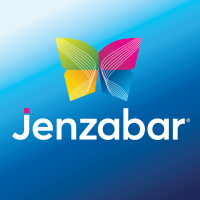______ I have been with Jenzabar for over 20 years and with the company it purchased, Campus America, for a total of 34 years. I have seen the role of HR change from being called Personnel, when we only worried about the admin piece, into where we are today. As our business grew, there became more opportunities for HR to contribute to the well-being of employees. We found ourselves trying to figure out the best way to measure their performance, determining what were the best benefits to offer instead of them just accepting what was given. The other large piece that began to evolve was the hiring piece. As we grew, we needed experienced, educated employees, who were sometimes very hard to find. I think it was in the late 1980s that we began to see the need for technology in the HR department. How can we speed up the work we are doing and keep track of the human side of the business? Employees were no longer happy just coming to work to do their job; they wanted us to recognize them and provide some “fun” to their workday, so we needed to tend to more physiological aspects. Move forward to today, things for Human Resources are more complex than ever; the laws, the needs of our employees, the state of our world, and the needs of the business itself are all more involved than they were 20 years ago. Today, I am a business partner to Jenzabar; I value each of the employees at Jenzabar and the ability to contribute to our great company. I am very thankful that we have a company that truly cares about each other and that our employees are working remotely to stay safe and healthy. Read More: TecHRseries Interview with Sarah Hamilton, Sr. Director of Human Resources – Workhuman The hiring of educated, experienced tech workers is complicated for HR. We must understand enough about the needs of the role to source and select the right people for managers to interview. The more effective we are at this, the better the hire and the less time it takes. The management of remote workers is also a newer factor in HR’s responsibilities – policy writing for telecommuting agreements and home office reimbursements, tailored performance reviews and communication, and training managers on how to properly manage remote workers. This is something that requires continuous assessment and adaptation as technologies evolve, which leads me to believe that HR needs to have the graceful ability to make a 180-degree turn at any time, keep up with competitors and the research provided by groups like SHRM, and consult with IT and other related departments about changes we need to consider regarding our tech stack (like our implementation of PluralSight). Read More: HR Tech Tools That Can Enable An Easier Remote Hiring Process I have seen a big increase in mental health education and awareness from companies, which is really wonderful. Employees in industries that have been working remotely are feeling genuinely cared for more than ever, and a new kind of openness has been introduced to their teams, which has bonded them further. Mental health education has made great strides during this time, and I’m optimistic that we won’t regress to its previous state after this pandemic. Companies are learning that remote work works! I expect to see a shift in telework analytics now that companies know they can get an equal amount of productivity without paying for a big office to fit everyone. Offices will still exist, of course, just less square footage and cubes. Remote work and flexible schedules will also be very helpful for people with disabilities and chronic conditions. Likewise, remote work will become more available for people in rural areas and small populations. Jenzabar is higher education’s trusted advisor, offering technology solutions and services that are tailored to fit the evolving needs of institutions both today and in the future. Patricia is the Vice President of Human Resources at Jenzabar  With the onset of the Covid-19 pandemic, more industries and companies have come to the conclusion that remote work can be a good solution, if the right processes and HR technologies are put in place. Patricia Barnett, VP of Human Resources at Jenzabar shares her thoughts on how there will now be a shift in telework analytics given the new normal that will be introduced in to workplace cultures.
With the onset of the Covid-19 pandemic, more industries and companies have come to the conclusion that remote work can be a good solution, if the right processes and HR technologies are put in place. Patricia Barnett, VP of Human Resources at Jenzabar shares her thoughts on how there will now be a shift in telework analytics given the new normal that will be introduced in to workplace cultures.Tell us a little about yourself Patricia, and a little about your journey in HR over the years! How have you seen Jenzabar evolve and in your time in HR – how have business changes led to the evolution of your role?
Given your time and expertise in the human capital management industry, we’d love to know your thoughts on how the typical role of the HR manager in the tech / e-learning / education industry has evolved over the years. What are the demands/requirements for HR leaders today, especially skills that today’s HR leader needs that the one of yesteryear didn’t necessarily need to have?
Other factors we need to consider include:
HR Tech is enabling the efforts and goals of HR teams worldwide, could you share your top five must-haves or must-dos when it comes to selecting/adoption an HR Tech stack – what are the top factors that you consider?
In what ways would you advise HR teams to use their HR Technology and Tools to enable better employee engagement at a time when work from home is becoming a norm due to the current global pandemic?
What are some of your top leadership tactics that you’d say help enable better team building and alignment of goals across an organization?
Can you talk about some of the most innovative HR/ Workplace Culture trends that you see taking over the tech / B2B / learning and education industry, given the current world situation? How according to you is the Future of Work (and life!) going to evolve given the current pandemic and the influence of HR Tech?
What are the top 5 points of advice you’d give leaders and teams who are struggling to cope in times of global uncertainty?

Paroma Sen is a contributing Editorial Director for TecHRseries.com (HRtech Series). She is a director of Strategy at iTech Series, a publishing house with a ubiquitous and panoptic coverage of the MarTech, Artificial Intelligence, Machine Learning, SalesTech and Ad technology verticals.

